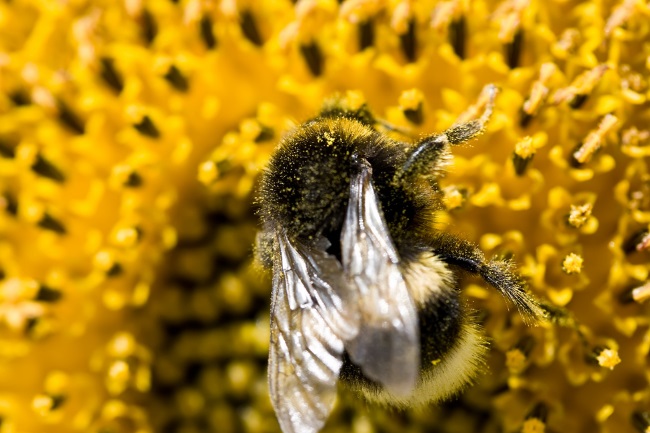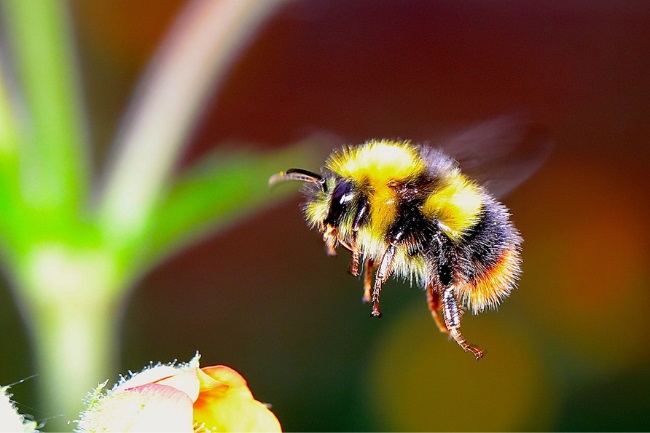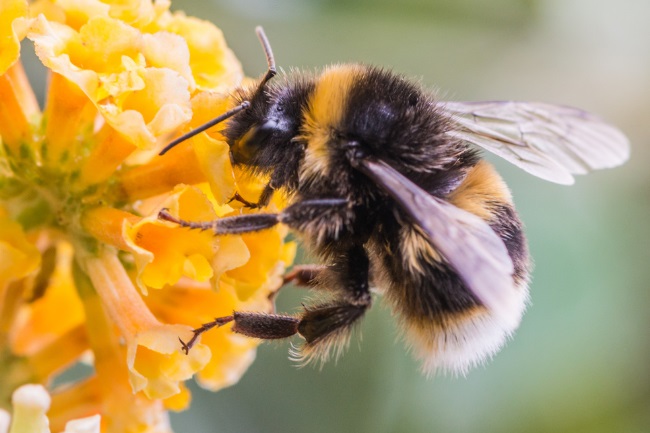A bumblebee’s lifespan varies depending on the species and where they live. It also ranges within a nest, depending on the role the bumblebee plays. Queen bumblebees live the longest, around a year, while workers and drones only live a matter of weeks.
Contents
What is a bumblebee?

There are around 250 species of bumblebees worldwide, only a tiny proportion of the 20,000 species of bees. However, these small fluffy insects have captured our imagination and our hearts, due to their adorable appearance and generally gentle nature.
Bumblebees are flying nectar-feeding insects that are usually coloured in bands of black, white and yellow, though some are bright orange or red. Many live in nests or hives, similar to honey bee species, though these are usually much smaller, numbering between 50 and a few hundred individuals.
Also read: Here’s “Why Bee is an Insect” (Explaining the Characteristics)
A bumble bee’s life
Bumblebees, like honeybees, have distinct roles and purposes depending on their gender and place within the society of the hive. What role they are born into will significantly affect their lifespan.
| Bumblebee Caste | Lifespan |
|---|---|
| Queen | Several months to over a year |
| Workers | Few weeks to a few months |
| Drones | Few weeks to a few months |
The queen
Queen bumblebees are the longest-lived of all the bumblebees in the hive. Why? Because without her, the rest of them can’t survive. She is the only female who can lay eggs, and the eggs become the workers who keep the hive going by foraging for fresh pollen and nectar.
She starts her life in her mother’s nest, where she is picked out of a lineup of identical larvae to become the queen. She isn’t born different, but once the workers have chosen her, they feed her up with extra helpings of food to make her bigger and stronger than the rest. She won’t be the only queen fed up at this time, with others also being given the honour of founding new hives.
Once she’s developed into an adult, it’s time to go out into the world. First, she will find herself a mate, or her mate will find her. Male, drone, bumblebees are much smaller than females, who can be over twice their size.

Once she has mated, she will feed herself up and then find a safe place to make a nest. Here she will enter diapause as the winter sets in, hiding away usually underground, until the spring.
When spring arrives, she’s one of the first out of bed, keen to get on with her royal duties. You’ll often see queen bumblebees at this time of year, buzzing around like noisy little helicopters, as big as your thumb and searching for nectar and pollen.
Having quenched her thirst, she will head back into her nest and begin laying eggs, having stored their father’s sperm throughout the winter. Bumblebees incubate their eggs, sitting over and vibrating their wings to create warmth. Once these eggs hatch and become workers, the queen won’t bother leaving the nest again. Many times smaller than her, her workers will spend their days fetching pollen and nectar and caring for the young.
New queens and drones will be produced towards the end of the summer when they hive is coming to an end. Drones are significantly less useful than workers, leaving the nest on hatching and simply spending their time feeding themselves and heading out to look for females to mate with.
New queens will be produced and head out, but the queen of this hive, and all her workers and drones, won’t make it through the winter, meaning the queen lives around a year, a short but significant reign.
Also read: When the Queen Bee Dies, What Happens?
The workers
Bumblebee workers, like the workers of a honeybee hive, are all female. They live much shorter lives than the queen and are unable to produce eggs while the queen is present. In general, they have one of two roles; staying in the nest to take care of the young or heading out to fetch food.
In many species, worker bumblebees have different markings or colours to the queen and are significantly smaller. They are the lifeblood of the hive; however, they only live a few weeks, usually between 3 and 5, meaning that the queen needs to keep producing more young to ensure the hive can continue to function.
The drones
Like male lions, drones appear rather lazy to a human eye, spending much of their time lazing around outside. You’ll often find drones asleep on flowerheads, having decided to have a quick snooze, with their heads down in their dinner.
However, this behaviour is so frequently observed because drones sleep outside at night and are therefore groggy until the sun warms them. Once they have hatched, they will leave their hive and spend the rest of their time feeding on nectar and pollen and searching for females.
Their only purpose is to find and mate with a young queen, which helps father the next generation of little bumblebees the following year.
Mating is a competitive business, however, and many unlucky males will fail to father offspring. Whether or not they get a chance to pass on their genes, they will only live around two weeks.
Also read: How Long Does a Dragonfly Live for? (Lifecycle Explained)
What else can affect a bumblebee’s lifespan?

Different species often have slightly different lifespans, particularly depending on the availability of food and the local climate. Species from more tropical regions will often live longer, taking advantage of extended warmth periods. Local climates can even affect this, as flowers may bloom for longer in sunnier locations.
Beyond climate and species, illness, parasites and accident can significantly affect a bumblebees lifecycle.
Cuckoo bumblebees could rather be called the villains of the bumblebee world. Like cuckoo birds, they are brood parasites, sneaking into a bumblebee’s nest and laying their own eggs, often killing the queen in the process.
| Factors | Impact on Lifespan |
|---|---|
| Caste | Queens generally live longer than workers and drones. |
| Environmental Conditions | Available resources, temperature, and habitat quality can affect lifespan. |
| Predators and Parasites | The presence of predators and parasites can impact bumblebee lifespan. |
| Season | Bumblebees generally have shorter lifespans during the colder seasons. |
| Reproductive Cycle | Lifespan varies depending on the timing and success of reproduction. |
The workers will then dutifully raise the cuckoo bumblebee’s young until they too succumb to old age and die, no new workers to replace them and keep the hive alive.
Parasites are another common problem for bumblebees. You may sometimes catch sight of bumblebees infested with small yellow or orange mites. These mites feed on the bumblebees blood. While it can survive a small number, too many can weaken the bumblebee and cause it to become ill and die.
Commercial beekeeping is responsible for moving some harmful bee parasites around the world. By shipping bees between countries or regions in order to produce honey or pollinate crops, humans unknowingly spread parasites to bee species that aren’t equipped to deal with them.
The largest bumblebee globally, Bombus dahlbomii, often affectionately called the flying mouse, is at risk of extinction because of the diseases and parasites spread to its wild populations from commercial bees.
A bumblebee’s life is also filled with natural dangers. When awakened from her hibernation by the warmth of spring, the queen is desperately hungry. However, on emerging, she may not find enough food for her to survive. This could because the flowers haven’t bloomed yet, or because humans have removed them, such as by cutting lawns, tidying gardens or covering the soil in concrete or fake grass.
The workers, too, have a hard life, heading out to collect pollen when at any moment they could be snared in a spider’s web or snapped up by a bird.
Even below the ground, the bumblebee nest may not be safe, easily dug up by animals interested in a tasty snack, or by humans ploughing the soil for crops or busily planting bulbs or plants.
Also read: When, How & What do Queen Bees Eat? (Explained)
Short but sweet
Like many of our insect’s bumblebees have a short life, not quite one summer but certainly something close to. Yet, they have a significant impact in that short time, pollinating our wildflowers, trees, and many of our crops.
Without them, we would be lost and a little less inspired. After all, they are the very sound of summer, buzzing seemingly without a care, through our sunny days.

